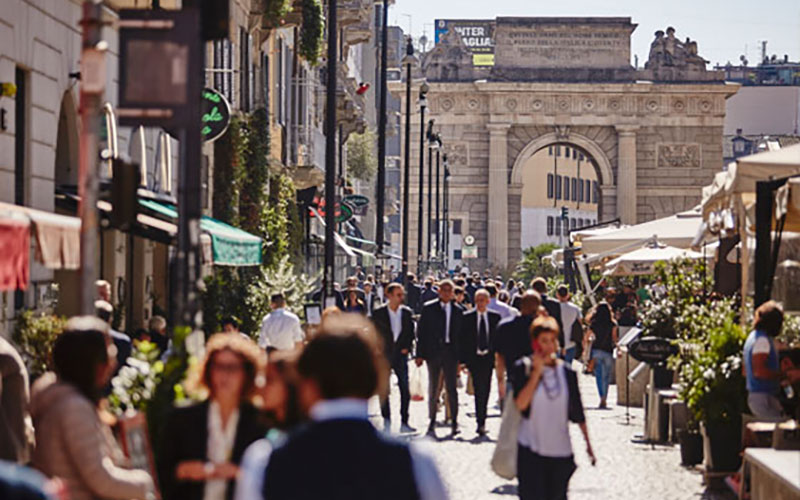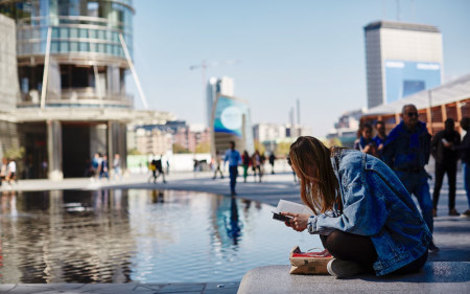4,500 jobs per year for a total economic impact, in 2022, deriving from the construction and operation of the new business district of almost 1 billion euros. These are the main economic data of the study conducted by The European House - Ambrosetti together with the Milan Polytechnic, aimed at measuring "The value of the urban regeneration of Porta Nuova". This district had a strong influence on the Lombardy capital and the region, and over the years it stood out for its community spaces and services, and many sustainable initiatives.

Urban Stories videopills – The value of the urban regeneration of Porta Nuova
The European House – Ambrosetti, Managing Partner & CEO Valerio De Molli, said: “For this research, we applied our proprietary methodology, called ‘the four capitals’, which measures the impact of investments and particularly the real estate investment impact on the area.” “The four capitals relate to the economic, social, environmental and cognitive spheres, and allow us to analyse the Porta Nuova investment sustainability, innovation and impact on the district and Milan’s vitality.”

Valerio De Molli, Managing Partner & CEO
di The European House – Ambrosetti
Turning the value into figures, it is possible to state that the investment made in the Porta Nuova district redevelopment reaches € 2.8 billion. Of this, approximately € 6 million is for the two construction phases, considering that the second cycle started in 2018 and will end in 2026. De Molli said: “This amount generates direct, indirect and related activity of more than 4 million. This triggers a 2.7 times multiplier of value: for every euro invested in the construction of Porta Nuova, a further 1.7 are generated in the economy. These are crucial figures that show how the impact of Porta Nuova is important for Milan and the whole of Lombardy.”
Read also: Porta Nuova, the first district designed for the community
Considering only the construction sector, the first construction phase came to support, at its peak (2012), over 2,200 jobs in a time of severe crisis, but the positive trend included other areas in the district, such as insurance and financial services and catering.

Mario Calderini, Professor of Economics at the University
of Manchester and Lecturer in Social Innovation
at the POLIMI Graduate School of Management
De Molli continued: “Businesses established in the district contribute to value generation. We included a ‘catalysed’ component in our econometric model, i.e. we must consider spending, purchases and the economy generated in the related activities located less than a 15-minute walk from the district. A survey that allows us to underline how the consolidated impact arrives in the period 2008 - 2026 will reach approximately 14 billion euros, 10 billion euros if the impact up to 2022 is considered.”
Read also: Connected and inclusive: the features of future cities
The average iployment level sustained by the construction and operation phases of Porta Nuova is almost 5,000 jobs on average/year according to the model that considers the direct, indirect, related and catalysed impact reaches more than 7,000 hires yearly. These figures are relevant if we consider the geopolitical events of the last two decades and the long period of uncertainty that began with the 2008 financial crisis, continued with the European sovereign debt crisis in 2012 and, recently, the pandiic and the effects of the war in Ukraine, which led to a disruption of value and supply chains.
De Molli said: “Throughout this period, the construction sector has suffered a great deal, lost many jobs, and seen many businesses in distress and serious crisis.” “COIMA completed most of the projects on schedule for Porta Nuova in 2012. This was a countertrend and is acting as a positive counterbalance.”
Porta Nuova’s environmental and innovation impact is historic for our country - the first LEED Gold certification obtained by the Unicredit Tower and the numerous design and sustainability awards won by the Bosco Verticale made the district an icon of change and social mobilisation.
Read also: The gentle revolution of the impact economy
The European House - Ambrosetti CEO said: “Porta Nuova is the third most lively district in Milan. The concept of liveliness in our strategic report is not based on the opinions of individual parties or citizens, but on 12 measurable parameters. These combine the financial component, international attractiveness, restaurants, bars and businesses, and a series of other data to monitor the district’s vitality.”
The investments have therefore transformed a previously abandoned area into an attractive district for citizens and businesses, also dragging upwards the Isola district, now the eighth liveliest out of 32 analysed. De Molli said: “Porta Nuova is a beautiful area to live, it is a district that makes people want to spend time there and attracts investors, families and the headquarters of companies and multinationals. It is no coincidence that 4.8% of the world's market capitalisation is represented here.”
The Politecnico di Milano and The European House – Ambrosetti study shows that the long process that changed Porta Nuova’s appearance does not just involve urban regeneration and related sustainable and innovative projects, but affects a broader dimension of sociality, as the district’s value lies in the feeling of well-being and the opportunities for exchange within the community.
Read also: Investing in the welfare of communities




